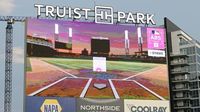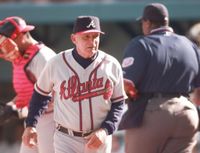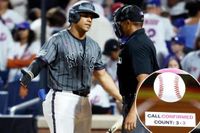Major League Baseball is stepping boldly into a new era, as robot umpires—officially known as the Automated Ball/Strike System (ABS)—are set to make their debut on the big stage in 2026. After years of speculation, heated debates, and rigorous testing across the minor leagues, the league’s 11-person Joint Competition Committee voted on September 23, 2025, to greenlight the ABS challenge system for all major league games next season. The move, widely anticipated yet still stirring up passionate opinions, marks the league’s most significant rule change since the sweeping adjustments of 2024, which included the now-familiar pitch clock and larger bases.
So, what’s actually changing? Despite the sci-fi nickname, human umpires aren’t being replaced outright. Instead, the challenge system preserves the traditional role of the plate umpire while injecting a technological safety net—one that’s already drawn plenty of attention during its minor league trials and recent spring training runs. Here’s how it works: human umpires will continue to call balls and strikes in real time, but for the first time ever, players on the field—specifically the pitcher, catcher, or batter—can challenge those calls. Each team gets two challenges per game, with the possibility of earning additional ones in extra innings if they run out. Want to challenge a call? Just tap your helmet or cap, and the ABS, powered by Hawk-Eye cameras, springs into action.
Commissioner Rob Manfred described the process as a careful, fan- and player-focused evolution. “The previous rule changes that have been adopted by the Joint Competition Committee have had staying power and created momentum for the game,” Manfred said in a statement. “We used the same process with ABS that started with listening to fans, conducting extensive testing at the Minor League level, and trying at every step to make the game better.”
The ABS challenge system is no stranger to baseball insiders. It’s been tested in the minor leagues since 2019, including a high-profile debut at the Atlantic League All-Star Game that year. The system has since made appearances in the Low-A Southeast League, all Triple-A games since 2022, and most recently, in 288 spring training games in 2025. Fans got a particularly good look during the 2025 MLB All-Star Game, where the challenge format was put to the test with a strike zone tailored to each hitter’s height.
How accurate is the system? According to UmpScorecards, big league umpires already call about 94% of pitches correctly. Former MLB umpire Dale Scott, who spent 31 years behind the plate, put the figure even higher, saying, “The umpire staff is accurate about 98% give or take, you know, a tenth of a point here or there on all pitches for the entire year. The problem is you miss a pitch in a crucial situation, and that thing is amplified a million times.”
That’s where technology aims to make its mark. With Hawk-Eye cameras tracking the ball’s path, the ABS determines whether a pitch is a ball or strike based on where it crosses the midpoint of the plate—8.5 inches from both the front and back. The top of the strike zone is set at 53.5% of the batter’s height, the bottom at 27%. When a call is challenged, the result is displayed almost instantly—usually within 13.8 seconds—on both the outfield videoboards and TV broadcasts. That means fans at home and in the stands get to see the replay, making the process transparent and, some argue, more exciting.
During the 2025 spring training tests, teams won 52.2% of their ball/strike challenges (617 out of 1,182). At Triple-A, the average number of challenges per game nudged up to 4.2 this year, with a success rate just under 50%. The data suggests the system is catching close calls that matter, while not slowing down the game in any meaningful way.
Not everyone is convinced the system will be flawless. New York Yankees outfielder Austin Slater, one of four players on the committee, voted in favor after consulting with players from 22 of the 30 teams. He acknowledged, “I think with any sort of technology, there’s not 100% certainty of the accurateness of the system. I think the same can be said of umpires. So I think it’s just coming to grips with the impact that technology is going to have and whether or not we were willing to live with that error that was associated with the system, even if the error is very, very minuscule.”
Yankees manager Aaron Boone, who’s no stranger to heated exchanges with umpires—he leads the American League in ejections for the fifth straight year—called the adoption “inevitable.” Boone admitted, “Throughout the year, I’ve been a little not totally on board with it or exactly how it’s going to be implemented but it’s going to be here and hopefully that’s a good thing. A lot of the things that Major League Baseball has done I think have been really successful in the changes they’ve made and hopefully this is another one of them.”
Other managers, like Cleveland’s Stephen Vogt, recognize the magnitude of the change. “You can like it, dislike it, it doesn’t matter,” Vogt said. “It’s coming. It’s going to change the game. It’s going to change the game forever.”
One of the big questions in baseball circles is how the ABS will affect the art of pitch framing, a subtle yet crucial skill for catchers. With only two challenges per game, Rangers catcher Kyle Higashioka sees the human element sticking around: “Unless you have a really good eye ... only getting two (challenges), I think a lot of the borderline ones are going to stay the same. So it keeps some of the human element in in the game.”
Major League Baseball has been inching toward this moment for years, with instant replay introduced in 2008 and expanded in 2014. The ABS challenge system, however, is perhaps the most direct attempt to resolve the age-old debate over balls and strikes—one that’s responsible for over 60% of ejections among players, managers, and coaches last season, according to MLB data.
As for the future, some wonder if baseball will one day adopt a fully automated system, removing the human element altogether. For now, that seems unlikely. Scott Bush, CEO of the Society for American Baseball Research, weighed in: “It doesn’t seem like that’s something that the players are particularly interested in today. I think if we didn’t have a great group of ball strike umpires currently within Major League Baseball, I think that maybe the players would feel differently. But Major League Baseball is a really good job of training umpires, and they currently have some really great ball strike umpires.”
With the 2026 season on the horizon, anticipation—and a fair bit of nervousness—is mounting among players, coaches, and fans alike. Will robot umpires usher in a new era of fairness and accuracy, or will the technology introduce its own quirks and controversies? One thing’s for certain: when Opening Day arrives, baseball will look—and feel—a little different.


